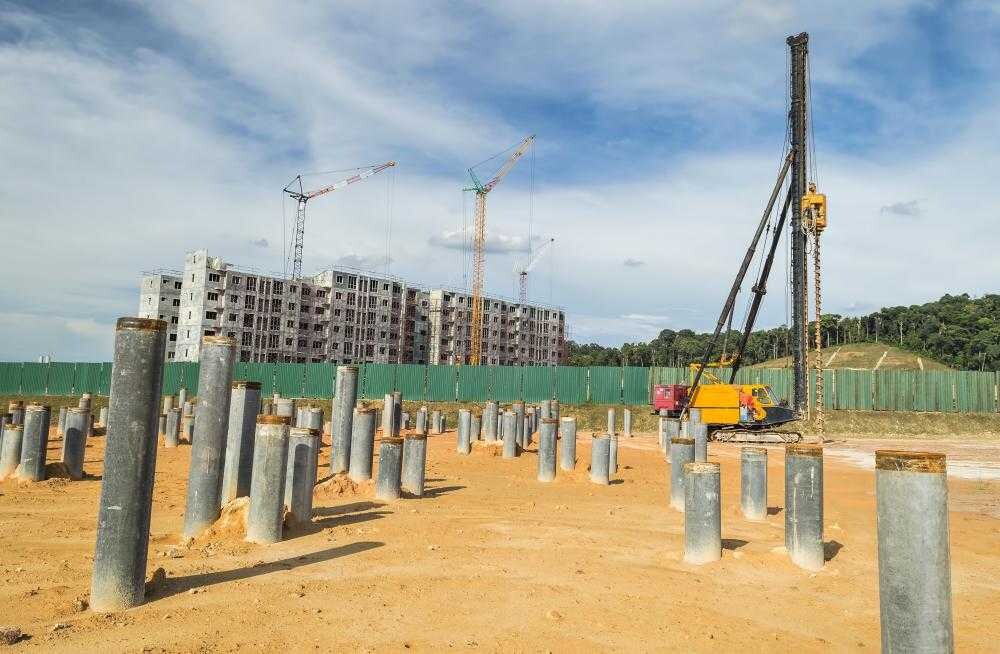NEWS
CONTACT US
GET IN TOUCH

This is a method of building the foundation of an edifice. More specifically, it means digging deep into the ground to build a supporting structure. Other building foundations might be made by shallow excavation, but in many locations, the soil quality below a certain depth is too poor to allow this method; or there may be one or more property lines nearby; or the design loads may simply be so great that a deep pit is required.
Pile driving is one of many deep foundation excavation methods. The unique thing about it is that it is done on-site, that is, using only raw materials available on the building site, rather than using excavators and other earth-moving machinery. The foundation may be a single pile, consisting of just a single section on which the entire structure rests. Or it may be more complex, with a whole set of piles, the tops of which are embedded in concrete blocks called pile caps and connected to each other with grade beams; both can bear the weight of a building, depending on its size.Pile driving is a very old method of building construction, and naturally so is the equipment used to do this kind of work.
Steel pipes suitable for piling
1. Spiral Seam Submerged Arc Welded Steel Pipe (SSAW)
Production process: By rolling the steel plate into a spiral shape and welding it.
Advantages: Suitable for pile pipes with larger diameters, with high production efficiency and cost-effectiveness.
Application: Widely used in large infrastructure construction such as bridges, docks, ports, etc.
2. Straight Seam Submerged Arc Welded Steel Pipe (LSAW)
Production process: Made by forming a wide steel plate and welding it along a straight line.
Advantages: Large diameter and thick-walled steel pipes can be manufactured with high strength and stable quality.
Application: Suitable for projects with high bearing capacity requirements such as high-rise buildings and offshore platforms.
3. Seamless steel pipe
Production process: Made by processes such as perforation and drawing, without welded joints.
Advantages: Smooth inner surface, excellent mechanical properties, strong compressive resistance and good corrosion resistance.
Application: Especially suitable for pile driving projects that require high precision and reliability, such as foundation projects of precision buildings.
4. Electric Welded Steel Pipe (ERW)
Production process: The edges of the strip steel are fused together using high-frequency resistance welding technology.
Advantages: fast production speed, high dimensional accuracy, suitable for small and medium diameter pile pipes.
Application: commonly used in foundation treatment of residential buildings, small commercial facilities, etc.
A machine called a pile driver is used to drive piles into the ground to provide support for a building. It usually consists of a crane mounted on tracks (like a crawler tractor or excavator) and runs on a two-stroke piston diesel engine. A cylinder connects the top of the pile to a piston, which acts as a weight. A cable would raise the weight, which would then be lowered by a quick release. The resulting compression of the air causes it to heat up, at which point the cylinder receives a jet of diesel, which ignites the air. The ignition causes the energy of the falling weight to be transferred to the head of the pile, which rises back up and reenters. The cycle would then repeat.
